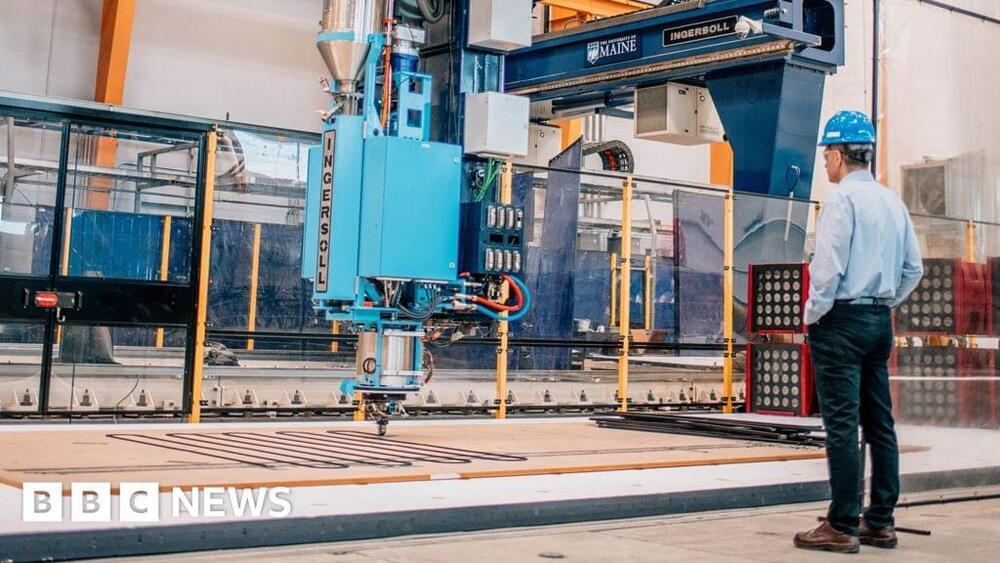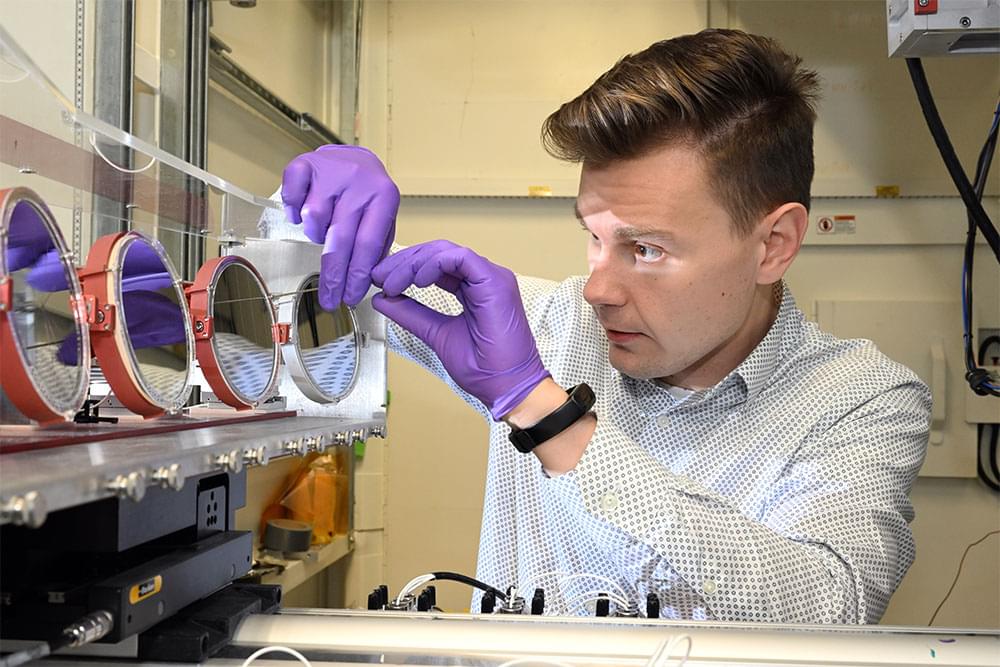It’s hoped giant device will be able to print homes, bridges, boats and wind turbines.





A recent study published in the journal Nature by an international team of 279 scientists, including three biologists from the University of Michigan, provides the latest insights into the flowering plant tree of life.
Using 1.8 billion letters of genetic code from more than 9,500 species covering almost 8,000 known flowering plant genera (ca. 60%), this achievement sheds new light on the evolutionary history of flowering plants and their rise to ecological dominance on Earth.
Led by scientists at the Royal Botanic Gardens, Kew, the research team believes the data will aid future attempts to identify new species, refine plant classification, uncover new medicinal compounds, and conserve plants in the face of climate change and biodiversity loss.



This article is part of a series of pieces on advances in sustainable battery technologies that Physics Magazine is publishing to celebrate Earth Week 2024. See also: Q&A: Electrochemists Wanted for Vocational Degrees; Research News: Lithium-Ion “Traffic Jam” Behind Reduced Battery Performance; Q&A: The Path to Making Batteries Green; News Feature: Sodium Batteries as a Greener Lithium Substitute.
Since the first prototype made its debut in 2000, rechargeable magnesium batteries have continued to be both technologically attractive and commercially out of reach. The attraction arises from magnesium’s advantages over lithium: it is 1,000 times more abundant in Earth’s crust and is chemically less hazardous. The unrealized commercialization is largely down to the difficulty in identifying a material to serve as an effective and robust cathode. Tomoya Kawaguchi of Tohoku University in Japan and his collaborators may now have solved that problem through their demonstration of a material that satisfies one of the most important requirements of a good cathode: it can reversibly accept and release ions over repeated charging cycles [1].
The discharge of an electrochemical battery releases electrons that flow through the connected circuit. It also releases ions from the battery’s anode that flow through the battery’s electrolyte, in the opposite direction to the electrons, and then lodge in the cathode. The flows reverse directions during recharging. In a lithium-ion battery, the cathode is made from a lithium oxide and takes the form of either a layered material or a crystalline solid known as a spinel.


Real-time in situ x-ray observations of new nickel-rich lithium-ion batteries reveal that reduced performance comes from lithium ions getting trapped in the cathode.
This article is part of a series of pieces on advances in sustainable battery technologies that Physics Magazine is publishing to celebrate Earth Week 2024. See also: Q&A: Electrochemists Wanted for Vocational Degrees; Q&A: The Path to Making Batteries Green; News Feature: Sodium as a Green Substitute for Lithium in Batteries; Research News: A New Cathode for Rechargeable Magnesium Batteries.
Electric vehicles are picking up visibility in the public eye. But their adoption is slowed down by batteries that degrade over time, an issue commercial ventures are especially keen on addressing as they adopt increasingly nickel-rich cathodes—the cathode du jour for high-end electric vehicles. The substitution of nickel for cobalt in earlier versions of these cathodes can improve their performance, but it also accelerates degradation. Earlier this year, Louis Piper, University of Warwick, UK, and his colleagues devised and demonstrated an x-ray technique that can examine industry-grade versions of nickel-rich lithium-ion batteries in real time [1]. Their observations help to narrow down why these batteries degrade and lead to suggestions for how to prolong battery lifespans.

As the old saying goes, two heads are better than one. The same is true when it comes to solar cells working in tandem. Researchers at the U.S. Department of Energy’s National Renewable Energy Laboratory (NREL) have prepared a roadmap on how to move tandem solar cells—particularly those that mesh different photovoltaic technologies—closer to commercialization.
As the researchers pointed out in an article in the journal Joule, considerably more solar power must be added globally beyond the currently installed 1 terawatt of capacity. Because of the growing population and increased electrification of all energy sectors, experts are predicting the world will need 75 terawatts of photovoltaics (PV) by 2050.
The vast majority of solar modules in use today rely on a single junction, which is able to absorb only a fraction of the solar spectrum and thus are limited to how efficient they can be. Tandem solar cells, which consist of two or more junctions, hold the potential to reach much higher efficiencies. Because tandems are stacked on top of each other, the total area a module requires decreases—in turn, raising the efficiency and potentially lowering the total system cost.